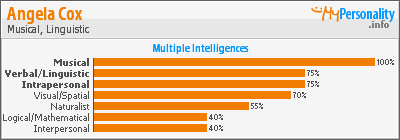My curriculum shows long-term learning and improvement in critical-thinking skills. As students progress through the curriculum, they are exposed to more complex methods of collecting and analyzing data. I chose to start with graphs that sixth grade students would already be familiar with, such as frequency tables and circle graphs. The curriculum continues while getting more complex when it includes double-bar graphs, double-line graphs, stem-and-leaf plots, and finally, the calculation of measures of central tendencies.
At the beginning of the curriculum, students are using authentic assessments that rely more on peer collaboration rather than individual contributions. For example, students work together when graphing the colors of their M&Ms. However, further on in the curriculum, students are using the knowledge gained from working with their peers to do some individual calculations and make some individual decisions.
The curriculum emphasizes improvement in students’ critical-thinking skills by having them use estimation and written reflections. I would like to further extend this curriculum by giving students a choice on how they want to demonstrate their learning. Through the discussion in Unit 9, I realize more than ever the importance of letting students use their intelligence strengths. Gardener’s theory of multiple intelligences really does incorporate all students, from students with learning disabilities to those classified as gifted. Also, by giving students a choice, I am creating a sense of ownership and pride in their learning that would not be there otherwise.
References
References
DiMartino, J. & Castaneda, A. (2007). Assessing applied skills. Educational Leadership, 64(7), 38-42.
Florida Department of Education (2005). Next Generation Sunshine State Standards. Retrieved August 2009, from http://www.floridastandards.org/
McTighe, J. & Thomas, R.S. (2003). Backward design for forward action. Educational Leadership, 60(5), 52-55.
Smith, M.K. (2000). Curriculum theory and practice: The encyclopaedia of informal education. Retrieved July 2009, from http://www.infed.org/biblio/b-curric.htm
Udelhofen, S. (2005). Keys to curriculum mapping: Strategies and tools to make it work.
Thousand Oaks, CA: Corwin Press.
Zemelman, S., Daniels, H., & Hyde, A. (2005). Best practice: Today’s standards for teaching and learning in America’s schools. Portsmouth, NH: Heinemann.

